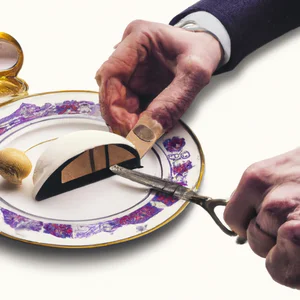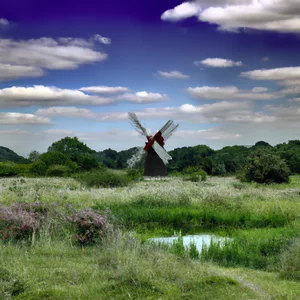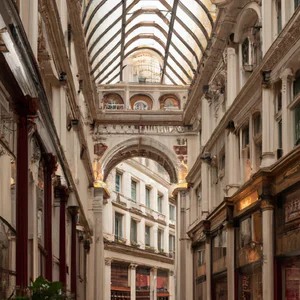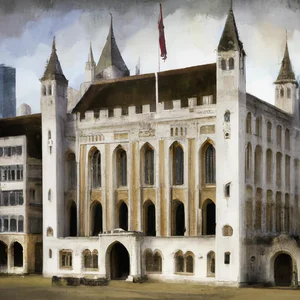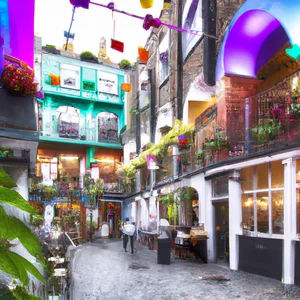Book your experience
Earl's Court: from Little Australia to the cosmopolitan residential district
Earl’s Court, eh? What a story, guys! It was once known as “Little Australia”, a bit like that fairy tale they tell you as a child, you know? There were a lot of Australian people moving there, in short, a real melting pot. Can you imagine? Barbecues in the garden and surfers strolling down the street!
Now, however, it has become a super cosmopolitan residential neighborhood. That is, when you go there, it seems like you are in a cultural market, there are restaurants of all kinds, from Japanese to Italian ones. And let’s not talk about the coffees! Every corner is good to stop and drink a cappuccino or tea. It’s a vibe that gets you, you know?
I remember once going there with a couple of friends, and we found a little place that served pasta so good you felt like you were back home, but with a London twist. The people were so varied, it was like being in a movie, with actors of all nationalities mixing together.
Of course, not everything is rosy. With all this development, there are also a lot of changes that not everyone likes. Some longtime residents say it was better before, when the neighborhood had a little more character, but who knows? Maybe it’s just a question of point of view.
Ultimately, Earl’s Court is like a good book with several stories, and each page has its ups and downs. I think it’s interesting to see how a place can transform over time, but, well, sometimes I wonder if it’s losing a bit of its soul. Maybe it’s just nostalgia, who knows?
Earl’s Court: a corner of Little Australia
A personal anecdote
When I arrived at Earl’s Court for the first time, I immediately felt transported to a corner of Australia without having to fly. The liveliness of the conversations in English with an Australian accent, the aromas of the culinary specialties and the signs of the cafés that recall the Australian outback captured me. I particularly remember stopping at a small café called “Billy’s” where, in addition to enjoying a cappuccino that would have delighted any barista in Melbourne, I was lucky enough to chat with some Australian expats who told me stories of life in London, making that afternoon unforgettable.
A corner of history
Earl’s Court, historically known as “Little Australia”, saw massive immigration of Australians in the post-war period, when many sought new opportunities. This neighborhood is not just a meeting point for nostalgics from the southern hemisphere, but a true melting pot of cultures. Today, Australian traditions mix with British ones, creating a unique and cosmopolitan atmosphere that makes it a fascinating place to explore.
Insider tip
If you really want to immerse yourself in the atmosphere of Little Australia, I recommend you visit the “Earl’s Court Tavern”. This pub isn’t just a place to sip a beer; it is a meeting point for the Australian community. During major sporting events, such as rugby or cricket matches, the venue fills with fans cheering for their favorite team, creating an atmosphere of celebration and camaraderie.
The cultural impact
The Australian presence in Earl’s Court has profoundly influenced the local culture, bringing with it not only their cuisine, but also lifestyles and values. This intercultural exchange has made the neighborhood an example of how different nationalities can coexist harmoniously, enriching the experience of those who visit it.
Sustainability and responsible tourism
Earl’s Court is also making significant steps towards sustainable tourism practices. Many of the local restaurants and shops are committed to using organic ingredients and reducing waste. For example, the “Australian Bakery” uses local flours and zero km products, an approach that not only supports the local economy, but also offers fresh and genuine dishes.
An experience not to be missed
Don’t miss the chance to attend an “Aussie BBQ” held in the parks during the summer. These events not only offer an authentic taste of Australian food, but are also a great opportunity to mingle with locals and get to know the Earl’s Court community.
Myths and misconceptions
A common myth is that Earl’s Court is just an area for tourists. In reality, it’s a living, breathing neighborhood, where residents care about their community and where you can find authentic experiences away from the tourist traps.
A final reflection
Earl’s Court is much more than just a corner of London; it is a place where cultures meet and intertwine. I invite you to consider how a neighborhood can tell stories of hope and human connection. Have you ever wondered what other cultures might surprise you in this cosmopolitan corner of London?
Forgotten history: the neighborhood’s colonial past
A memory that surfaces
During a walk in Earl’s Court, I found myself browsing the narrow cobbled streets and Victorian-style houses, when an older gentleman approached to tell me stories from the past. In a soft Australian accent, he spoke to me about how this corner of London was a refuge for many Australian and New Zealand emigrants, a place where colonial traditions mixed with British culture. This cultural exchange has left an indelible mark on the neighbourhood, making it an authentic “Little Australia”.
A dive into history
Earl’s Court’s colonial history dates back to the early 20th century, when the neighborhood began to populate with young Australians seeking their fortune. Today, many of the historic structures and local pubs, such as the famous The Blackbird, tell these stories through photographs and memorabilia. If you’re curious to find out more, the Museum of London offers temporary exhibitions that explore the connection between London and its former colonies.
An insider tip
A little-known tip is to visit Earl’s Court gardens, a green area that often escapes tourists. Here, you can find a small community of local gardeners growing plants and flowers unique to Australia. They sometimes hold gardening events open to the public, where you can learn about native Australian species and how to care for them.
The cultural impact
This colonial past has shaped the identity of Earl’s Court, creating a unique cultural mix. Restaurants and cafes offer Australian specialities, such as meat pie and lamington, which attract both locals and visitors. Additionally, the neighborhood is often home to events celebrating this heritage, such as the Earl’s Court Festival, where Aboriginal music and dance mix with British traditions.
Sustainability and responsibility
Earl’s Court is increasingly committed to responsible tourism. Many local restaurants use organic and zero kilometer ingredients, while cleaning initiatives in gardens and public spaces actively involve residents and visitors. Participating in these activities not only enriches your experience, but also helps preserve the beauty of the neighborhood.
Immersion in the atmosphere
Strolling the streets of Earl’s Court, let yourself be enveloped by the vibrant atmosphere. The bright colors of the cafés and the floral decorations of the shop windows create a tableau that tells of a lively and welcoming community. The sounds of conversations, mixed with the melodies of street musicians, make every corner a sensory experience.
An activity not to be missed
I recommend you take part in a historical themed guided tour, which will take you to discover hidden corners and forgotten stories of the neighbourhood. You can find tours organized by passionate local guides, such as those offered by London Walks, who they are perfect for those who want to delve into the history and culture of Earl’s Court.
Myths and misconceptions
A common misconception is that Earl’s Court is just a transit area for tourists. In reality, the neighborhood is a melting pot of cultures and histories, a place where every visit can reveal something unexpected. Often overlooked by the most crowded tourist circuits, it offers an authenticity that enchants those who know where to look.
A final reflection
As you immerse yourself in the history of Earl’s Court, ask yourself: How have the stories of this community helped shape not only the neighborhood, but also my perception of the world? Learning about a place’s past can enrich your travel experience and Who knows, it might even make you see your own environment with new eyes.
What to see in Earl’s Court: unmissable attractions
When I first set foot in Earl’s Court, I was struck by the Victorian architecture that encompasses the neighbourhood, but what caught my attention was the vibrancy of its streets. One afternoon, walking down Warwick Road, I came across a little cafe serving homemade carrot cake. As I sipped a cappuccino, I listened to the stories of a group of Australians who had found their community here, creating a corner of Little Australia in the heart of London.
Attractions not to be missed
Earl’s Court is a treasure trove of attractions. Among the unmissable:
- The Science Museum: A journey through innovation and technology, perfect for families and science enthusiasts. Free admission and interactive exhibitions make the visit unforgettable.
- The Royal Albert Hall: Even though it is just a short walk away, its impact on Earl’s Court is undeniable. Attending a concert here is an experience that enriches not only the musical palate, but also the soul.
- The garden of the Church of San Giacomo: A corner of tranquility where you can take refuge from the bustle of the city. During my visit, I discovered that the garden is home to a variety of local plants, perfect for those who love botany.
An insider tip
If you want an authentic experience, visit Earl’s Court Market on Friday mornings. Not only will you find fresh, artisanal produce, but you’ll also have the opportunity to talk to local vendors, who can share fascinating stories about their production and the evolution of the market itself.
Cultural and historical impact
Earl’s Court has been a center for Australian immigration, and this influence is reflected in the neighbourhood’s culture. Its colonial past has helped create a unique fusion of cultures, where Australian traditions are intertwined with British ones. This melting pot has influenced not only gastronomy, but also cultural events that enliven the neighborhood throughout the year.
Sustainability and responsible tourism
Many of Earl’s Court’s shops and restaurants have embraced sustainable practices, such as using organic and local ingredients. Choosing to eat in these places not only supports the local economy, but also contributes to more responsible tourism.
A unique experience
For an unforgettable activity, take part in a guided walking tour that explores not only the main attractions, but also the hidden stories of the neighborhood. These tours, often led by locals, will take you behind the scenes of Earl’s Court and reveal corners that few tourists know about.
Myths and misconceptions
A common misconception is that Earl’s Court is just a tourist dormitory. In reality, the area is alive and breathing, with an active community and diverse cultural initiatives that make it a fascinating place to explore.
Final reflection
Earl’s Court is not just a neighborhood to visit; it is a place where life stories, cultures and traditions intertwine. After discovering its attractions, I ask you: what stories will you take home from this corner of London?
Local gastronomy: savor authentic dishes
A tasty encounter at Earl’s Court
I still remember the first time I set foot in a small restaurant in Earl’s Court, “The Australian Bakery”. The scent of freshly baked bread and lemon cakes enveloped me like a warm blanket on a rainy day. While savoring a traditional meat pie, I felt transported to a corner of Australia, thousands of kilometers away, but surprisingly close. Earl’s Court, with its large Australian community, is a true paradise for food lovers, where you can discover dishes that tell stories of distant cultures.
Dishes not to be missed
Australian gastronomy is a mix of influences, with dishes ranging from Asian to European cuisine. Among the unmissable specialties:
- Lamingtons: cake-based desserts covered in chocolate and coconut.
- Pavlova: a meringue-based dessert, often garnished with fresh fruit.
- Vegemite on toast: a classic that cannot be missed for breakfast, for the more daring.
- BBQ: BBQs are a sacred tradition, and there’s nothing better than enjoying a cookout in local parks.
For an authentic experience, I recommend visiting “The Aussie Shop” in Earl’s Court, where you can find Australian ingredients and snacks, as well as a great selection of local wines.
An insider tip
If you want to try something truly unique, don’t miss the Bush Tucker Experience offered by some local restaurants. This culinary tour will take you to discover native Australian ingredients, such as kakadu plum and finger lime, which not only enrich dishes, but also tell ancient stories of culture and tradition.
A profound cultural impact
Earl’s Court cuisine is not only a reflection of the Australian community, but also a meeting point between different cultures. The presence of restaurants and cafes serving Australian dishes promotes cross-cultural understanding and celebrates London’s gastronomic diversity. In an age where food has become a universal language, Earl’s Court stands as a model of inclusion.
Sustainability and responsibility
Many restaurants in Earl’s Court are committed to sustainable practices, such as using local and organic ingredients, contributing to a more responsible food supply chain. If you are a conscious traveller, try to choose places that adopt eco-friendly practices and are attentive to environmental impact.
Soak up the atmosphere
Walking through the streets of Earl’s Court, let yourself be enchanted by the colors and scents wafting from the restaurants. Park benches provide the perfect backdrop to enjoy a meat pie or a slice of Pavlova, while the sound of laughter and conversation creates a welcoming and lively atmosphere.
An activity worth trying
For a truly memorable experience, take an Australian cooking class at one of the local restaurants. You will learn to prepare typical dishes and you will have the opportunity to learn about gastronomic culture directly.
Myths and misconceptions
A common misconception is that Australian cuisine is just a collection of British dishes. In reality, it is an amalgam of influences from around the world, enriched by Aboriginal culture and the culinary traditions of the many immigrants who have chosen to call Australia home.
A personal reflection
Next time you visit Earl’s Court, ask yourself: Which dish tells my story? Discovering local gastronomy is not only a way to satisfy the palate, but also a journey into the heart and soul of a community. Are you ready to be surprised by the authentic flavors of this corner of Little Australia?
Markets and shops: unique shopping experiences
An anecdote about Earl’s Court
I still remember the day I discovered Earl’s Court Market. As I strolled the cobbled streets, the smell of freshly roasted coffee guided me to a small kiosk, where an affable Australian barista served piping hot cappuccinos. With a cup in hand and the buzz of the market around me, I felt transported to a corner of Little Australia, an experience that made my stay in London truly unforgettable. In this neighborhood, shopping is not just an activity, but a journey through cultures and traditions.
Practical and up-to-date information
Earl’s Court offers a variety of markets and shops that reflect its multicultural history. Earl’s Court Market is a must for those looking for fresh produce, local crafts and unique souvenirs. It’s open every day, but Wednesdays and Saturdays are the best days to visit, when local vendors display their wares in abundance. Don’t forget to visit Kensington Market, just a short walk away, which is home to an array of independent boutiques and vintage shops.
An insider tip
If you want a truly authentic shopping experience, look to Ladbroke Grove Market. Although it is not located exactly in Earl’s Court, it is easily reachable within a few minutes by public transport. Here you will find not only delicious street food, but also crafts and artwork by local artists. It’s a place where you can chat with the creators and discover the story behind each piece.
Cultural and historical impact
Trading in Earl’s Court has deep roots, dating back to colonial times. This neighborhood has been a meeting point for different cultures, and its boutiques and markets are proof of this. Here, Australian traditions mix with British influence, creating a lively and cosmopolitan atmosphere. Each shop tells a story, and each market is a reflection of the community that animates it.
Sustainable tourism practices
Many of Earl’s Court’s shops and markets are adopting sustainable practices, such as using biodegradable packaging and promoting local produce. Choosing to purchase from these shops not only supports the local economy, but also contributes to more responsible tourism.
An immersion in the atmosphere
Imagine strolling along the streets of Earl’s Court, surrounded by bright colors and the sounds of vendors offering their wares. The boutique windows shine in the sun, inviting you to explore. Every corner has a story to tell, and every purchase becomes part of your personal London adventure.
An activity worth trying
Don’t miss the opportunity to participate in a local craft workshop, often organized in markets. Here you will have the opportunity to create your own souvenir, learning traditional techniques from expert craftsmen. It’s a perfect way to bring a piece of Earl’s Court home.
Myths and misconceptions
A common misconception is that Earl’s Court is just a tourist area, with no real links to the local community. In fact, the markets and shops here are mostly run by residents who want to share their passion and culture with visitors.
Final reflection
Earl’s Court is not just a stop on your journey, but an opportunity to connect with London’s history and culture. What stories will you take with you after visiting this fascinating corner of the capital?
Art and culture: events that enliven the neighborhood
I still remember my first visit to Earl’s Court, when, walking through the lively streets, I was drawn to a small art gallery hidden behind a café. It was Kensington and Chelsea Art Week, an annual event that transforms the neighborhood into a creative stage. My curiosity led me to enter, and I discovered works by local artists that reflected the diversity and energy of this community. Since that day, Earl’s Court has become my cultural refuge, a place where art and culture come together in a vibrant embrace.
Unmissable events
Earl’s Court is a crossroads of cultural events that attract visitors from all over London. Throughout the year, the neighborhood hosts festivals, exhibitions and artistic events. Among the best known are:
- Kensington and Chelsea Art Week: an exhibition celebrating local creativity with temporary installations and artistic performances.
- Earl’s Court Film Festival: a series of short films highlighting emerging talent, with screenings taking place in unusual locations, such as public gardens.
These events not only provide an opportunity for entertainment, but also a way to connect with the local community and appreciate the neighborhood’s rich cultural history.
An insider tip
If you want a unique experience, I recommend taking part in one of the open studios held at local artists’ studios. These often little-publicized events allow you to explore creative spaces, interact with artists and purchase original works directly from them. It’s a way to discover the lesser-known side of the Earl’s Court art scene.
Cultural and historical impact
Earl’s Court, with its historic colonial heritage, has always played an important role in London’s cultural scene. The influences of different cultures are reflected in the artworks on display and the events that take place here. The art gallery The Mosaic Rooms, for example, is dedicated to promoting artists from the Arab world and Southeast Asia, creating a bridge between different cultures and histories.
Sustainability in cultural tourism
Many Earl’s Court events and galleries are embracing sustainable tourism practices. Participating in events that promote local artists not only supports the community, but also reduces the environmental impact associated with large-scale artistic productions. Choosing activities that encourage local art is a responsible way to enjoy the neighborhood.
An invitation to explore
Imagine strolling through the streets of Earl’s Court during a cultural event, surrounded by colorful works of art, while the scent of ethnic food wafts in the air. There is an atmosphere of excitement and creativity that is contagious. I invite you to discover Kensington and Chelsea Art Week or visit one of the local galleries on a weekend, because every corner of this neighborhood has a story to tell.
And if you’ve ever felt like art is a distant and inaccessible experience, I encourage you to consider how culture can bring you closer to a vibrant community, inviting you to explore the world from a new perspective. What stories might you discover in the colors and shapes of Earl’s Court artists?
Sustainability in Earl’s Court: responsible tourism
I remember my first visit to Earl’s Court, when, while walking through the colorful streets of the neighborhood, I came across a small local market. Here, a seller of organic fruit and vegetables passionately told me how his garden was grown without pesticides, respecting the environment and local traditions. This experience opened my eyes to how Earl’s Court is a model of sustainable tourism, a place where the community actively works to preserve its cultural and natural heritage.
A collective commitment
Earl’s Court is an example of how a neighborhood can embrace responsible tourism. Many locals and shopkeepers are aware of the importance of sustainable practices. For example, the Earl’s Court Farmers’ Market, held every Saturday, not only offers fresh, local produce, but also supports the region’s producers. This market is an important platform to promote sustainable agriculture and reduce the associated carbon footprint to the transport of products.
A hidden tip
If you want a unique experience, look out for the London Eco-Awards, a local initiative that recognizes the most sustainable businesses and projects in the city. Attending this event will give you an idea of how the neighborhood is working towards a greener and more responsible future. Additionally, you may have the opportunity to meet people who are passionate about sustainability, discovering new ideas and practices to take home.
Cultural heritage
Sustainability in Earl’s Court is not just about the environment, it is also deeply rooted in local culture. The neighborhood has a history of hospitality and community, dating back to its colonial past. Today, this tradition continues through initiatives that involve residents and visitors, creating a sense of belonging and collective responsibility.
Responsible tourism practices
If you would like to contribute to more sustainable tourism during your visit, consider:
- Choose eco-friendly accommodation, such as bed & breakfasts that use renewable energy.
- Use public transport or cycle to explore the neighbourhood, thus reducing greenhouse gas emissions.
- Participate in local events that promote sustainability and community art.
An experience not to be missed
Don’t miss the chance to visit Brompton Cemetery, a beautiful Victorian cemetery that offers an oasis of tranquility and natural beauty. Here, you can walk among ancient trees and discover local flora and fauna, all in a context of historic preservation. This place is a perfect example of how history, culture and nature can coexist harmoniously.
Myths to dispel
A common misconception is that sustainable tourism requires sacrifices in terms of comfort and enjoyment. Instead, Earl’s Court demonstrates that it is possible to enjoy a rich and satisfying experience without compromising the environment. The beauty of this neighborhood lies precisely in its ability to offer unique and authentic attractions, without damaging the social and natural fabric.
Final reflection
As you explore Earl’s Court, ask yourself: How can I contribute to more responsible tourism on my next adventure? Considering the impact of your travel choices not only enriches the experience, but also helps preserve places like this for future generations . Sustainability is not just a trend; it is a way of traveling that brings us closer to the true essence of the places we visit.
Unique tip: Explore the hidden gardens
When I first set foot in Earl’s Court, I found myself in a corner of London that felt like a world apart. While walking along the lively streets, a local friend told me a secret that changed the way I see the neighborhood. Behind the elegant facades and busy streets, lie hidden gardens that tell stories of beauty and tranquility, offering unexpected refuges from the frenzy of urban life.
A journey through the secret gardens
Earl’s Court is known for its bustling shopping streets and historic architecture, but the real magic is found in its hidden gardens. Among the most fascinating is Brompton Cemetery, a monumental cemetery dating back to 1840, which is not only a final resting place, but also a public park where ancient trees and ornate tombs create an atmosphere of serenity. For the more adventurous, Earl’s Court Gardens, a small park near the station, is a quiet corner where residents meet to chat and relax.
An insider tip
If you want to explore these gardens in a unique way, I recommend visiting Brompton Cemetery during the early hours of the morning. Not only will you have the chance to enjoy an atmosphere of calm, but you may also come across bird watchers who gather here to observe the various species of birds that inhabit the place. Bring a packed breakfast with you and savor your coffee while enjoying the view, away from the chaos of the city.
Cultural and historical impact
Earl’s Court Gardens, while often overlooked by tourists, represent an important part of its cultural identity. These green spaces offer a refuge from busy lives, promoting wellbeing and community. They are also an example of how the city is trying to preserve its heritage by integrating nature into the urban environment.
Responsible tourism practices
Visit these gardens with respect, following local rules and helping to keep the environment clean. Carrying a reusable water bottle is a small gesture that can make a difference as you explore this hidden part of London.
Immerse yourself in the atmosphere
Walking through the paths of these gardens, you can’t help but feel transported to a different dimension, where time seems to slow down. The smells of blooming flowers, the singing of birds and the rustling of leaves create a harmony that invites reflection.
An unmissable experience
Don’t forget to bring a camera with you. The sculptures and architecture of Brompton Cemetery provide stunning photography opportunities, perfect for capturing the beauty of this hidden corner of Earl’s Court.
Myths to dispel
A common misconception is that hidden gardens are unsafe or neglected. In reality, many of these spaces are well cared for and frequented by residents and visitors. The key is to visit during the day, when the atmosphere is livelier and more welcoming.
Final reflection
What does it mean to you to discover a place away from the crowd? Earl’s Court offers us a unique opportunity to explore forgotten stories and serene landscapes that escape the frenetic pace of modern life. Try to immerse yourself in this experience and be inspired by the beauty of the hidden gardens.
Nightlife: Where to have fun like a local
When I think of Earl’s Court, one of the things that comes to mind is its vibrant and ever-changing nightlife. I remember one evening in particular, when I found myself in a little-known bar, hidden in the back streets. Live music filled the air, and the scent of fresh cocktails mixed with the laughter of customers. It was as if I had discovered a secret corner of the city, a place where people gathered to share stories and create memories.
The unmissable places of nightlife
Earl’s Court offers a range of options for every type of evening. From traditional pubs like The Pembroke, famous for its welcoming atmosphere and craft beers, to more modern bars like The Earl’s Court Tavern, where contemporary design meets a selection of creative cocktails. If you’re a lover of live music, you can’t miss The Troubadour, an iconic venue that has seen performances by famous artists over the years.
- The Pembroke: a historic pub with an outdoor garden perfect for summer evenings.
- The Earl’s Court Tavern: Offers weekly quiz events and karaoke nights.
- The Troubadour: a magical place where music and history intertwine.
An insider tip
If you want an authentic experience, try to attend one of the open mic nights at The Troubadour. Here, emerging artists perform alongside local talent, creating an intimate and engaging atmosphere. It’s an opportunity to discover new artists and, who knows, maybe even make a few friends along the way.
The cultural impact of nightlife
Earl’s Court nightlife isn’t just about fun; it also reflects its history as a cultural melting pot. The bars and restaurants are a microcosm of the different communities that inhabit the neighborhood. Everything is fine venue tells a story, and each evening is a celebration of the diversity that characterizes this corner of London.
Sustainability and responsibility
In an age where responsible tourism is increasingly important, many venues are adopting sustainable practices. From reducing food waste to using local ingredients, there are many initiatives underway to make Earl’s Court nightlife more eco-friendly. When choosing where to go, consider supporting locals who make a difference.
An experience not to be missed
Don’t forget to try an espresso martini at The Earl’s Court Tavern. This cocktail, unexpected in its simplicity, has become a symbol of London nightlife and is prepared here with particular care. Perfect for ending an evening on a high note!
Myths and misconceptions
A common misconception about Earl’s Court is that its nightlife is only for tourists. In fact, it is a place where locals gather to have fun and socialize. Don’t be fooled into thinking it’s just a visitor attraction - you’ll find a vibrant and welcoming community here.
Final reflection
Every time I pass by Earl’s Court, I can’t help but wonder: how will this place evolve in the coming years? Nightlife continues to change, and with it, so does the community that supports it. Perhaps, like me, you too will find a piece of your heart in this charming neighborhood of London, where every evening is a new adventure.
Historical walks: discover hidden corners and secrets
One afternoon a few years ago, while exploring the streets of Earl’s Court, I found myself in front of a small alleyway adorned with blue tiles and written in Gothic characters. It was Brompton Square, a corner as fascinating as it is often overlooked by tourists. As I walked, the scent of tea and freshly baked cakes wafted from a local coffee shop, where residents gathered to discuss the latest news in the neighborhood. That scene, simple but full of life, captured the essence of what makes Earl’s Court such a special place.
A journey through time
Earl’s Court is a neighborhood that tells stories through its streets and buildings. Many don’t know that this corner of London has been an important point of reference for Australian and New Zealand communities since the 19th century. Today, as you stroll, you can easily come across historic buildings such as the Brompton Oratory, an impressive Catholic church that stands majestically, bearing witness to the neighborhood’s architectural past.
An insider tip
If you really want to get a taste of the history of Earl’s Court, I recommend taking one of the guided walks organized by Earl’s Court Walking Tours. These tours will not only take you to the most iconic places, but will also reveal anecdotes and curiosities that you wouldn’t find in tourist guides. For example, few know that the area hosted the first major motor show in 1907, an event that marked the beginning of the popularity of car shows in London.
A significant cultural impact
The history of Earl’s Court is not limited to its colonial past; it is also a hub of cultural innovation. The neighborhood has seen the emergence of several communities, each of which has left its own mark. This cultural mosaic is visible in the architecture, restaurants and markets that dot its streets. History walks are not only a way to explore, but also an opportunity to understand the social fabric that shaped the neighborhood.
Responsible tourism
When exploring Earl’s Court, consider adopting sustainable tourism practices. Choose restaurants that use local ingredients and take tours that promote the history and authentic culture of the place. Not only will you contribute to the local economy, but you will also gain a deeper insight into what makes this neighborhood so special.
An experience not to be missed
Don’t miss the opportunity to visit the London Natural History Museum, which is located a short distance from Earl’s Court. Spend an afternoon exploring its fascinating displays and, finally, treat yourself to a stroll in nearby Kensington Gardens. Here, the well-tended gardens offer a refuge from the bustle of the city, perfect for a contemplative break.
Dispelling the myths
A common misconception about Earl’s Court is that it is a tourist-only neighbourhood. In reality, it is a vibrant and authentic place where residents live and work. Its streets bustle with life, and the local markets are great places to interact with the community.
Final reflection
As you walk the streets of Earl’s Court, ask yourself: what stories lie behind every corner and every building? The beauty of this neighborhood lies precisely in its ability to surprise and enchant, inviting you to discover not only what is visible, but also what is hidden among its historical folds. What secrets would you expect to find during your adventure?

 Architecture and Design
Architecture and Design Cities and Regions
Cities and Regions Culture and History
Culture and History Events and Festivals
Events and Festivals Fashion and Shopping
Fashion and Shopping Food and Wine
Food and Wine Nature and Adventure
Nature and Adventure Unique Experiences
Unique Experiences




















